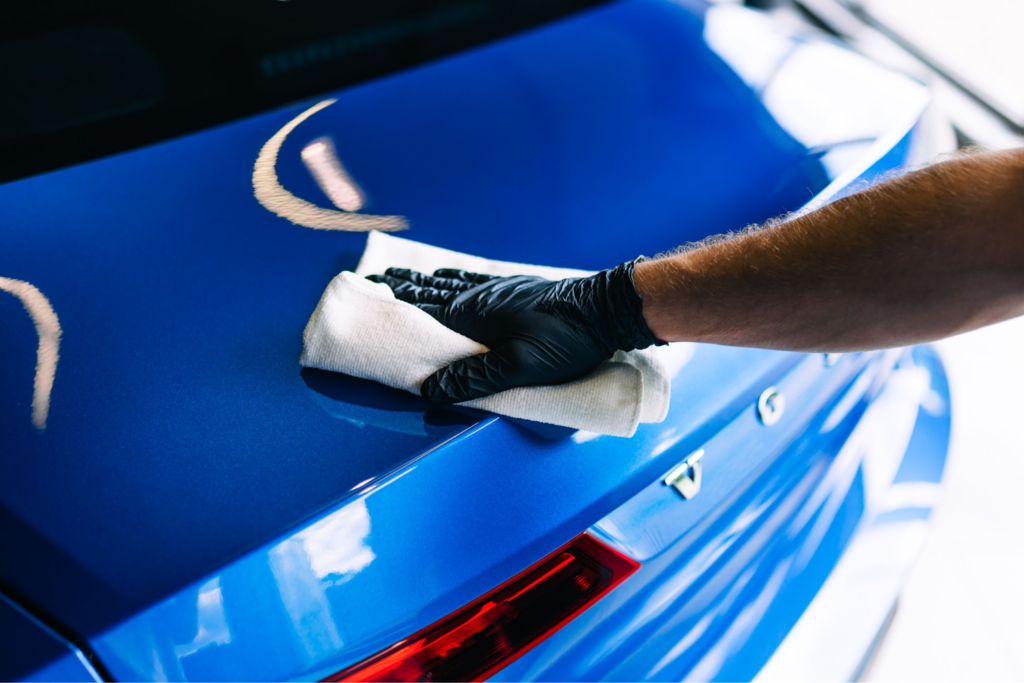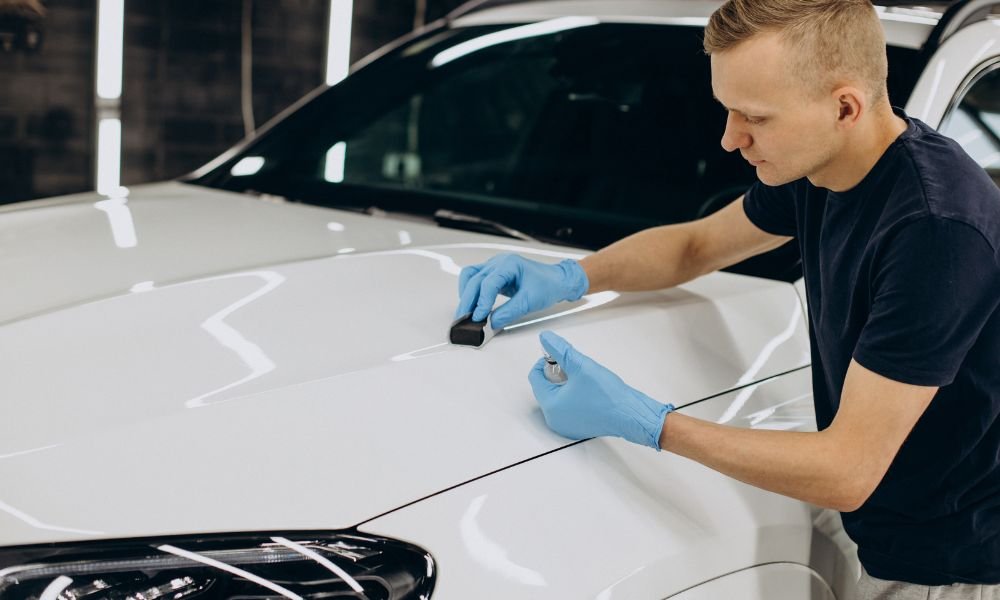Introduction Ceramic Coating: The Basics Shield Your Automobile Deserves
In an age where protecting the aesthetic and structural integrity of cars is paramount, ceramic covering emerges as an engaging option, supplying a durable safety shield unlike any other. As we explore the transformative influence of ceramic covering on car preservation, one must take into consideration the nuanced benefits this advancement uses over conventional techniques.
Understanding Ceramic Coating
Worldwide of vehicle enhancement, something that regularly piques the rate of interest of lorry fanatics and specialists alike is ceramic layer. At its core, ceramic finish is a liquid polymer related to the outside of a vehicle, producing a chemical bond with the automobile's factory paint. This protective layer, mostly composed of silicon dioxide (SiO2), is crafted to provide a durable guard against ecological pollutants.
The application process is careful, needing a tidy and dust-free atmosphere to ensure ideal adhesion and harmony. This covering kinds a semi-permanent bond with the car's paint, which suggests it doesn't clean away or break down like standard waxes or sealants, though it may call for reapplication in time because of ecological wear.
Ceramic finishes offer a high level of solidity which adds to its longevity, making it a liked option for those looking for long-term security for their vehicles. The layer is transparent, enhancing the natural gloss and depth of the paint, therefore maintaining the lorry's visual allure. It is critical, nevertheless, to understand that while ceramic coverings give a durable surface layer, they are not unsusceptible all physical damage, such as deep scratches or dents.
Advantages of Porcelain Finishing
Toughness is a trademark of ceramic covering, using vehicle proprietors a substantial benefit by significantly boosting the durability of their automobile's exterior. This advanced protective layer develops a durable shield versus environmental risks such as UV rays, oxidation, and chemical pollutants. By developing a semi-permanent bond on the automobile's surface area, ceramic coverings withstand the roughness of daily exposure to the elements, thus protecting the paintwork's honesty and vibrancy for an extensive period.
Moreover, the hydrophobic nature of ceramic finishes is another substantial advantage, as it effectively wards off water and prevents the build-up of dirt and grime. This residential property not just keeps the vehicle cleaner for longer periods yet additionally simplifies the upkeep routine, lowering the frequency and initiative needed for washing. The glossy surface of the finishing lessens rubbing, ensuring that contaminants move off easily without sticking to the paint.
In enhancement, ceramic finishings improve the aesthetic allure of automobiles by boosting the gloss and depth of the paint. This creates an aesthetically striking finish that can equal the appearance of a newly waxed vehicle, without the need for consistent reapplication. Overall, ceramic finishes offer a mix of security, ease of maintenance, and enhanced aesthetic appeals, making them an important investment for lorry proprietors.
Application Process Clarified
Understanding the process of using ceramic finishing is essential for accomplishing the protective and visual benefits previously reviewed. This action is vital as it makes certain the covering can effectively bond to the car's surface.
Following, the surface is clayed to get rid of any kind of installed contaminants that cleaning might not eliminate. Following this, a paint modification procedure may be needed to deal with any type of blemishes or scratches, as ceramic finishing can amplify existing you can try here issues rather than hide them. As soon as the surface area is ready and beautiful, the ceramic coating is applied in little, manageable sections using an applicator pad.

Contrasting to Typical Wax
When taking a look at ceramic finishes and traditional wax, one need to consider the distinct advantages each deals for vehicle defense. Typical wax has actually long been cherished for its capacity over here to boost a cars and truck's shine and use a basic layer of defense against elements like UV rays and minor scratches. It is fairly easy to apply and can be an economical remedy for those seeking momentary protection. Wax gives a deep, glossy coating that numerous auto lovers value, making it a preferred option for improving visual appeal.
Nonetheless, ceramic layers supply an advanced type of security. Composed of nano-ceramic fragments, these layers create a semi-permanent bond with the automobile's paintwork, producing a difficult, hydrophobic layer. This cause exceptional resistance to environmental contaminants, such as bird droppings, tree sap, and roadway gunk, which can substantially deteriorate a vehicle's coating gradually (ceramic coating). Unlike wax, which normally needs reapplication every few months, ceramic coverings can last numerous years with appropriate care, supplying long-lasting protection and lowering upkeep efforts.
In essence, while traditional waxes supply an affordable means to accomplish temporary gloss and protection, ceramic coatings provide an even more resilient, resistant shield, making certain a car's visual and structural honesty over time.
Preserving Your Porcelain Covering
Preserving view publisher site a ceramic coating calls for a mindful strategy to guarantee its longevity and efficiency. Unlike standard wax, a ceramic finish gives a durable layer of protection, but it demands appropriate care to maintain its stability.

Parking in shaded or covered areas can aid safeguard the layer from prolonged UV direct exposure, maintaining the vehicle's look. By adhering to these maintenance techniques, the ceramic coating can successfully give lasting security and visual allure.
Conclusion
Ceramic finishing stands for a substantial advancement in auto care, providing a durable protective layer that chemically bonds with car paint. Its benefits, consisting of UV resistance, oxidation avoidance, and hydrophobic residential properties, dramatically go beyond those of typical wax. The semi-permanent nature of ceramic coating ensures long-lasting gloss and relieve of maintenance, raising both the appearance and sturdiness of cars. Adoption of ceramic covering is a prudent choice for those looking for to boost and protect the aesthetic and structural honesty of their lorries.
At its core, ceramic coating is a fluid polymer applied to the exterior of a lorry, producing a chemical bond with the car's manufacturing facility paint.Ceramic finishes provide a high degree of firmness which contributes to its toughness, making it a chosen choice for those looking for long-term security for their vehicles.Longevity is a trademark of ceramic finish, providing lorry owners a substantial advantage by dramatically improving the long life of their car's outside. In general, ceramic finishes provide a blend of protection, simplicity of maintenance, and improved aesthetic appeals, making them an indispensable financial investment for vehicle owners.
When checking out ceramic finishings and typical wax, one should take into consideration the distinctive advantages each offers for lorry protection.